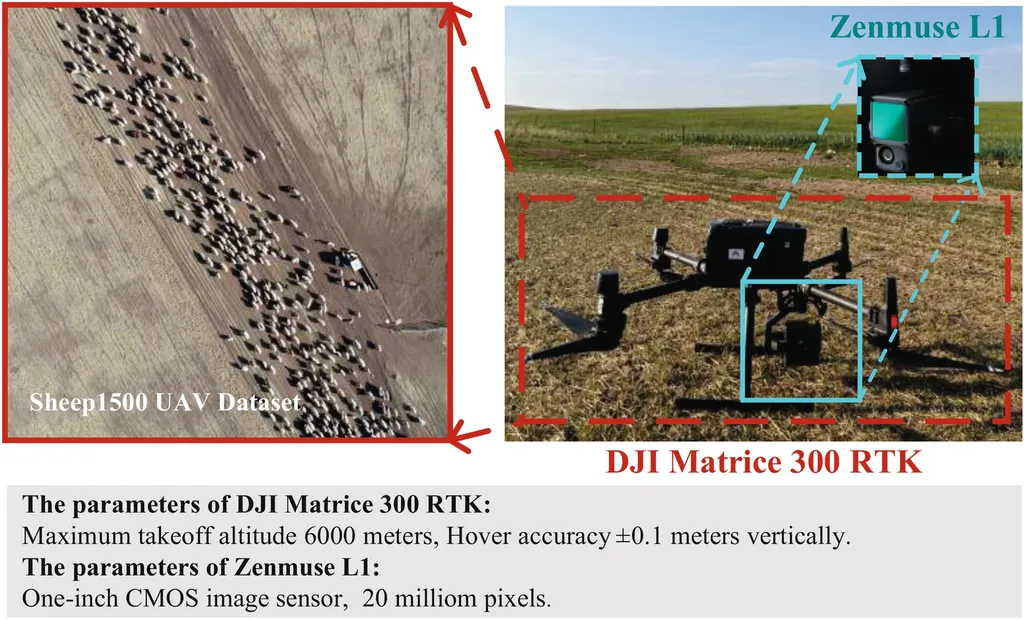In the vast, sprawling grasslands where sheep roam freely, counting these animals has long been a labor-intensive and costly endeavor. Traditional methods, while tried and true, often fall short in the face of dense herds and expansive landscapes. Enter Yini Chen, a researcher at the Information Technology Research Center of the Beijing Academy of Agriculture and Forestry Sciences, who, along with his team, has developed a groundbreaking solution to this age-old problem. Their work, published in the journal *Scientific Reports* (translated to English as *Scientific Reports*), introduces DASNet, a dual-branch multi-level attention sheep counting network that promises to revolutionize livestock management and ecological monitoring.
The challenge of accurate sheep counting is not merely academic; it is a critical component of animal husbandry and ecological balance. Accurate population statistics enable farmers and ecologists to optimize livestock management, ensuring the health and sustainability of both the animals and the grassland ecosystems they inhabit. However, traditional counting methods are time-consuming and costly, particularly when dealing with dense herds.
Chen and his team recognized the potential of computer vision to offer a cost-effective and labor-efficient alternative. “We saw an opportunity to leverage advanced technology to address a longstanding challenge in agriculture,” Chen explained. “By developing a system that can accurately count sheep from aerial images, we can provide farmers and ecologists with the data they need to make informed decisions.”
To train and test their system, the researchers collected the Sheep1500 UAV Dataset using drones in real-world settings. This dataset captures the diversity of grassland environments, with varying flight altitudes, diverse scenes, and different density levels. The complexity of the dataset posed a significant challenge: background object interference often led to inaccurate counts. To overcome this, the team developed DASNet, a dual-branch multi-level attention network based on density map regression.
DASNet is built on a modified VGG-19 architecture, incorporating a dual-branch structure to integrate both shallow and deep features. A Conv Convolutional Block Attention Layer (CCBL) focuses on sheep regions, while a Multi-Level Attention Module (MAM) refines feature representation at both the channel and pixel levels. This multi-level attention mechanism enhances the accuracy of density map generation, crucial for precise sheep counting.
The results speak for themselves. Experiments on the Sheep1500 UAV Dataset demonstrated that DASNet significantly outperforms the baseline MAN network, with a Mean Absolute Error (MAE) of 3.95 and a Mean Squared Error (MSE) of 4.87, compared to the baseline’s MAE of 5.39 and MSE of 6.50. “The improvements in accuracy and computational efficiency make DASNet an ideal solution for practical sheep counting in precision agriculture,” Chen noted.
The implications of this research extend beyond sheep counting. The dual-branch feature enhancement and global multi-level feature fusion capabilities of DASNet could be applied to a wide range of agricultural and ecological monitoring tasks. As precision agriculture continues to evolve, technologies like DASNet will play a pivotal role in optimizing resource management, improving animal welfare, and sustaining ecological balance.
In the broader context, this research highlights the transformative potential of computer vision and artificial intelligence in agriculture. By automating and enhancing the accuracy of tasks such as sheep counting, these technologies can free up human resources for more strategic and creative work. They can also provide data-driven insights that lead to more sustainable and efficient agricultural practices.
As the world grapples with the challenges of feeding a growing population while preserving the environment, innovations like DASNet offer a glimpse into a future where technology and agriculture coexist harmoniously. The work of Yini Chen and his team is a testament to the power of interdisciplinary research and the potential of technology to address real-world problems.
In the words of Chen, “Our goal is to make a tangible difference in the field of agriculture. By leveraging the latest advancements in computer vision and AI, we can create tools that not only improve efficiency but also contribute to the sustainability of our ecosystems.” With DASNet, they have taken a significant step towards that goal, paving the way for a new era of precision agriculture.

